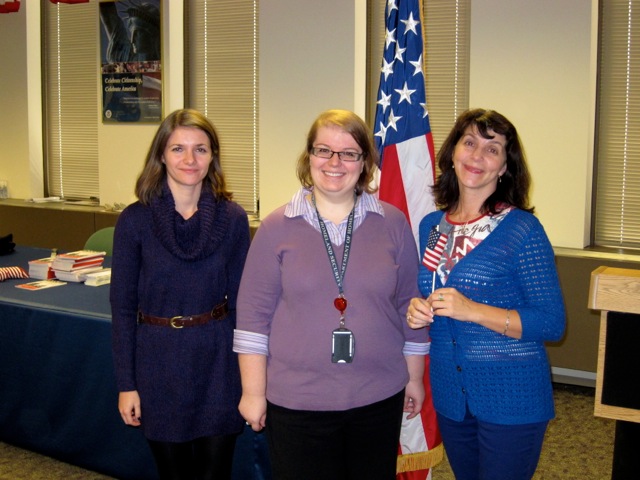Growing up in the Moscow region of Russia in the late 1980s and the 1990s, I don’t quite remember the Soviet times—but I do remember perestroika (“rebuilding”) and the aftermath of the Soviet Union collapsing. I remember standing in long lines to buy bread and bringing a milk can to be filled from a truck that came to my town on certain days of the week from a nearby farm. My family had a small plot of land where we grew our own vegetables and fruit such as potatoes, tomatoes, radishes, strawberries, and apples—not because it was healthy (though it was! It’s almost like we were hipsters before it was cool)—but because you couldn’t buy those things in stores until later in the 1990s, when the country’s economy normalized. Despite (or because of?) having to pitch in with the gardening and scarcity of material possessions (we never had a car, for example—unheard of in the US!), I remember my childhood as mostly a happy time. It is common in the Russian suburbs for all neighborhood kids to play together outside without parental supervision, so my time was filled with active games such as Cossacks and Robbers and dodgeball.
When I was a teenager, my stepdad found a job in the United States, which at the time might as well have been another planet to me. My mom soon followed him, and it was through my long phone conversations with her that I started to form my first opinions about the US. (One of my mom’s first impressions was the feeling of abundance at a Maryland supermarket.) When I first visited the United States, I was seventeen, and it was the first time I had encountered the language barrier. I knew the grammar and had a decent vocabulary from English lessons in school and university, but my training had completely lacked the conversational aspect. As a result, it was difficult at first to understand people and express myself—which is a struggle many immigrants face, especially those immigrating as adults.
My stepfather was lucky enough to be sponsored for a Green Card by his employer through the PERM process, although it was not quick or easy—as I know now, having done countless PERMs as a paralegal! At the time, however, I was not very involved—I just remember that it took years. During that time, I traveled back and forth between the Washington, DC area (where I visited my parents on school breaks) and Moscow (where I studied at Moscow State University). Every time I applied for a travel document (“advance parole”), we had to pay a fee—which ended up being a lot of money, since I needed that document every year. In 2007 (right around the time we finally got our Green Cards!), US Citizenship & Immigration Services (USCIS) issued a rule that foreign nationals could apply for a combined travel document and work authorization card for free as long as they had a pending Green Card application—and I am happy to see that many immigrants are now taking advantage of that provision, even if I wasn’t able to. Needless to say, it was a relief—and a feeling of liberation—when our Green Cards were approved. It’s crazy to think that this was a decade ago now.
After finishing graduate school in Washington, DC, I started working as a legal assistant with an attorney in Northern Virginia. Initially I had no immigration experience other than my own, but gradually I started working on various immigration cases—such as asylum, family-based, and employment-based petitions—and discovered that I really enjoyed the work, as it allowed for creativity in establishing a case strategy and was highly rewarding when a challenging case was approved. As the firm grew, I was promoted to immigration case manager—a role in which I gained a lot of valuable experience, not just in terms of immigration law and different types of applications, but also in dealing with people from very diverse backgrounds.
Alla, a DHS official, and Alla's mom at their naturalization ceremony in Maryland.
By the time my parents and I were eligible to apply for US citizenship (after five years as permanent residents), I handled our applications myself. Unlike our Green Card process, this was relatively easy (and took less than a year). Studying for the civics exam by going over the 100 questions (out of 100, each applicant is asked up to ten—you have to get six right) was surprisingly informative. The naturalization ceremony was simple, but moving—even the pre-recorded message from former President Obama felt special. (Funnily enough, with emotions running high, I did not notice during the ceremony that my naturalization certificate was not dated, and had to come back the next day to have it date-stamped.) Many immigrants assume that you are issued a US passport at the naturalization ceremony, but it is not true—I had to apply for mine separately at a US Post office (where they also took away my brand-new naturalization certificate for verification, which is normal practice). Receiving my blue US passport (and the naturalization certificate back) in the mail a few weeks later felt like the final step towards becoming an American.
Also at naturalization ceremony.
In the following years, I increasingly focused on business immigration in my career and finally took a job with a large business immigration law firm in Washington, DC, where my role was to handle PERM cases. I found that dealing with the PERM process—especially when you have over a hundred active cases at a time!—requires a lot of organization and forward planning. Since I love planning and organizing, that actually wasn’t as tedious as it sounds to most people; however, I missed working at a smaller firm where I could also do more writing and strategizing, including for unusual or challenging cases. That’s why Daryanani Law Group was a perfect fit for me when I moved from DC to New York. Here, I am also learning new types of petitions such as the O-1, which is a lot of fun (at the risk of sounding like a nerd). The only type of case I miss from my old days is probably asylum—I always enjoyed researching country conditions in different parts of the world when preparing asylum petitions, even though hearing applicants’ heart-breaking stories was often emotionally difficult.
The United States is perhaps one of the most inclusive countries in the world for immigrants, in terms of being able to naturalize, acquire the same rights, and strive to achieve the same goals as US-born citizens. Even so, for someone who had spent most of their life in a different part of the world, sometimes it is easy to feel like an outsider, even in this great country. From that perspective, I think being an immigrant myself helps me better relate to foreign nationals I work with and gives me personal insight into the immigration process.



